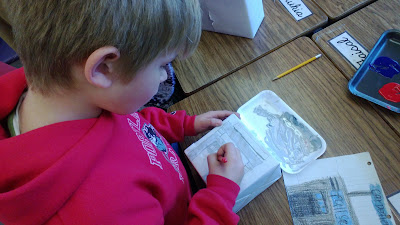We have been working really hard to get our 3D community together as of late. It was a lot harder of a project than we thought it was going to be. We collected all of our cardboard boxes from moms and dads and started talking about what a community map would look like. Where would the houses go? Where are the stores, restaurants, post office, police and fire department?
From the draft, they were able to pick a box, tape it together, wrap the box in butcher paper, and paint it to look like the building they were creating. We planned on using markers to add in tiny details after the paint had dried.
If all goes as planned, we will be putting together our 3D map this week and have it up before we leave for Christmas vacation. We have yet to decide if it will be hung in the classroom or in the hall for all to see. What would you do? We will keep you posted with our final outcome during break at some point!
























.JPG)
.JPG)



















